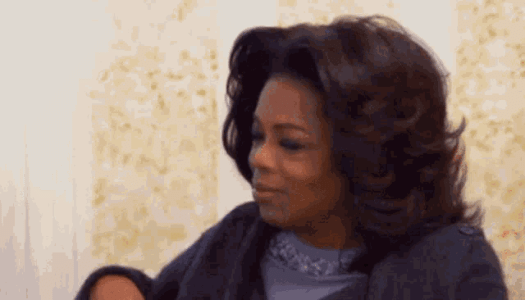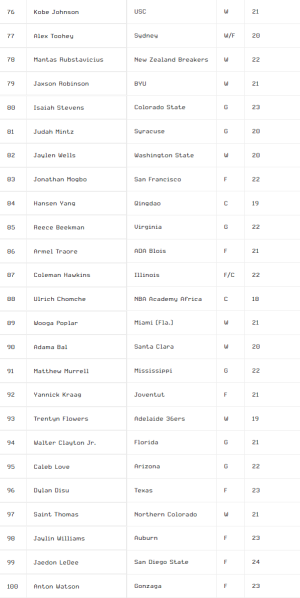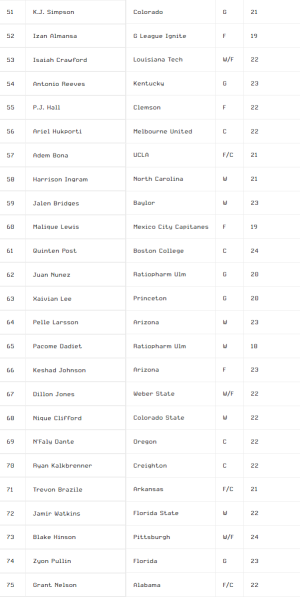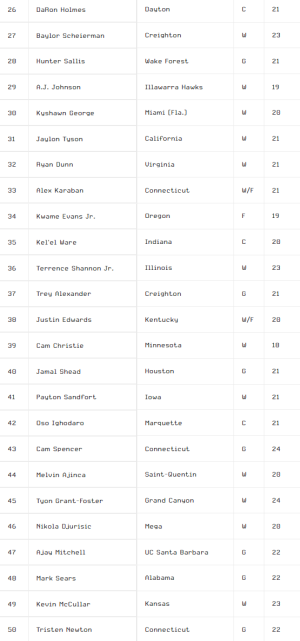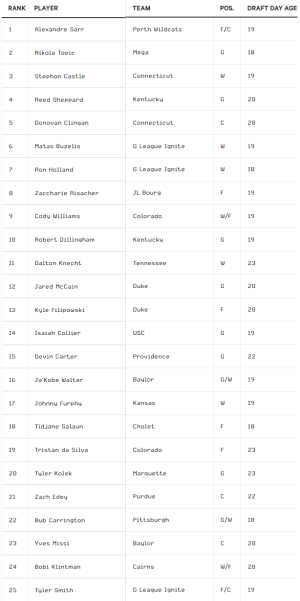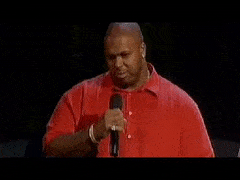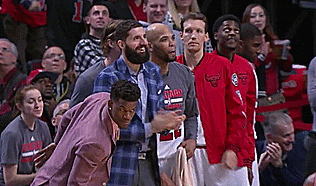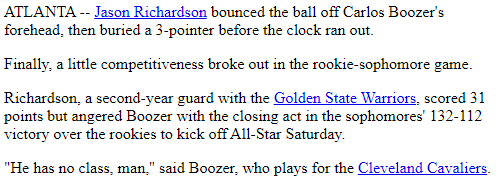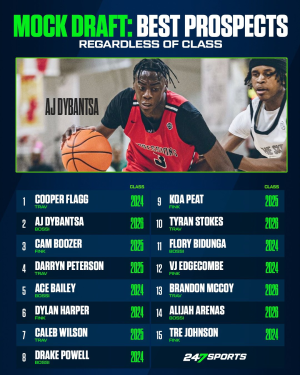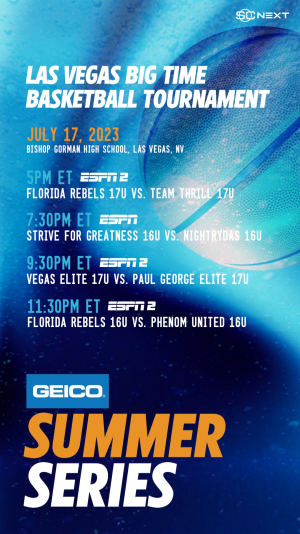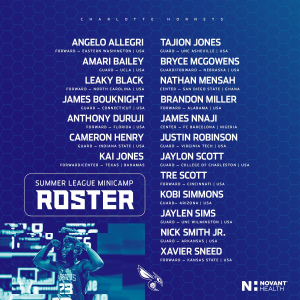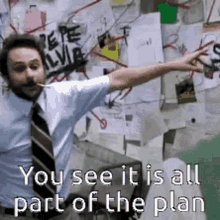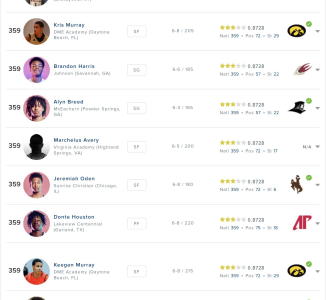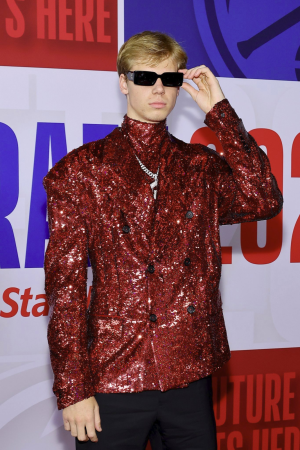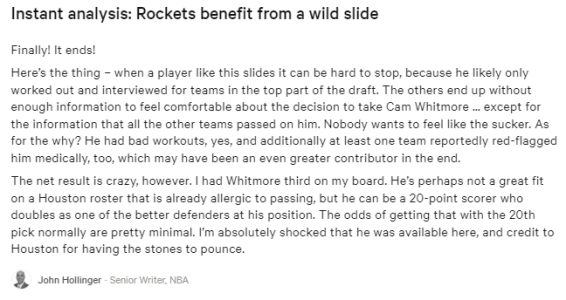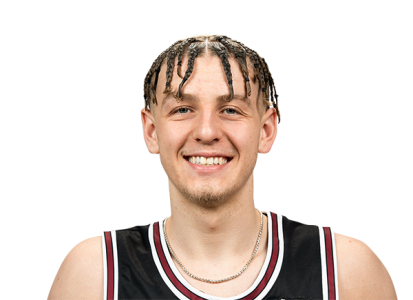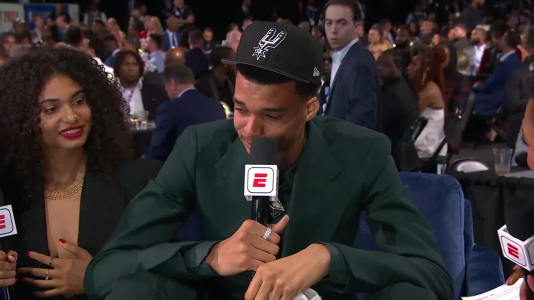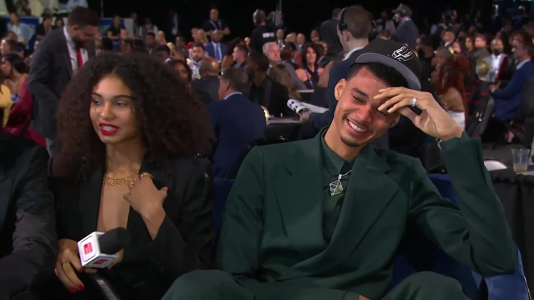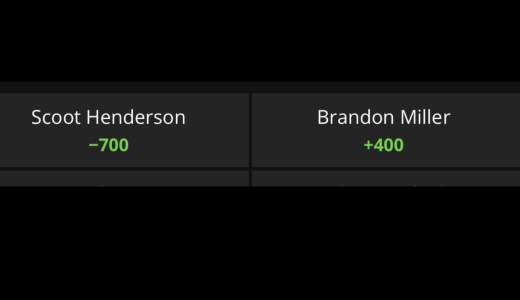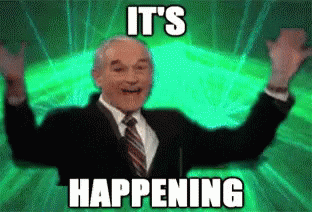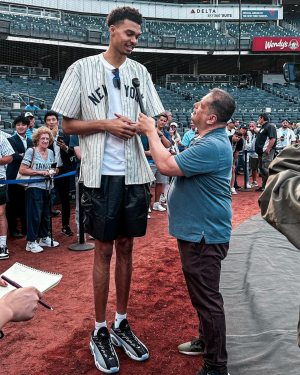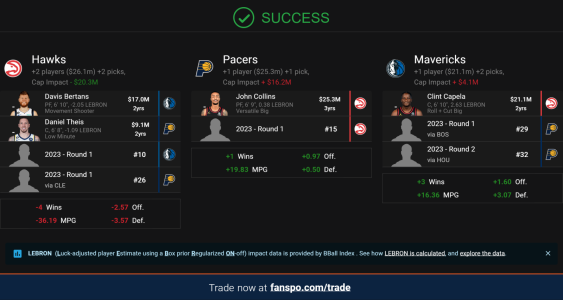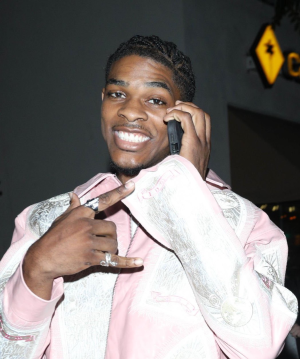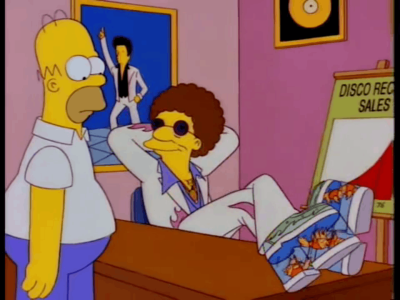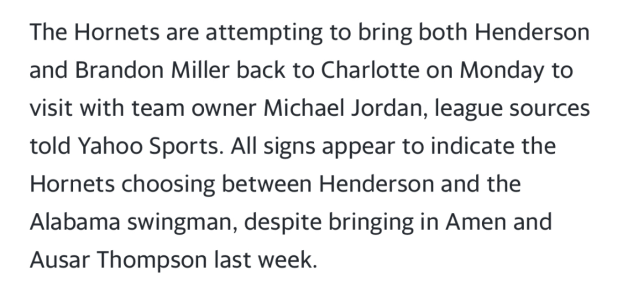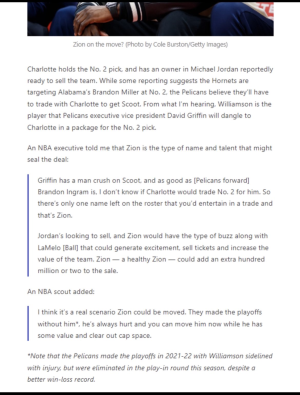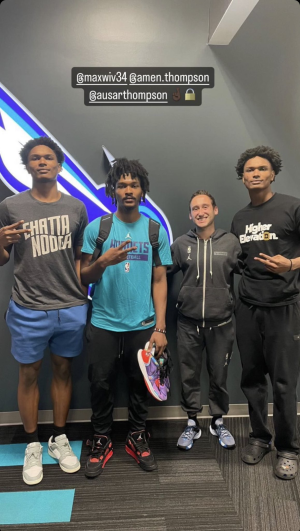- 70,715
- 112,341
- Joined
- Mar 31, 2011
Hollinger: Five takes on NBA Draft prospects where I’m against the consensus
 By John Hollinger Apr 20, 2020
By John Hollinger Apr 20, 2020 50
50 
The NBA draft is still two months away — alright, who are we kidding, it’s likely way more than two months away — but that hasn’t stopped NBA teams from launching deep into their draft prep. With little else to do right now, scouting deep dives have become the new normal for front office staffs.
They’re not the only ones. During the hiatus, I’ve had a lot of time to break down stats, catch up on film and develop some thoughts on where all these prospects rank on my board.
I’ve given you a few draft thoughts already on some undervalued players here, but now that the college season is over it’s time to wade deeper into the discussion.
Of course, anything draft-related always comes with a heaping tablespoon of salt. This is the draft — the league’s track record shows that there will always be surprises and disappointments and players we never saw coming. There’s just a huge random element to projecting how 20-year-olds will perform when they’re 25.
Nonetheless, we know enough about the draft to know which players have the odds in their favor, both from historic analytic data and the old-fashioned “eye test.” Having seen this sausage made from both sides — as a media member and via seven draft cycles in the Grizzlies front office — I have a few thoughts regarding the public perception of this current crop of prospects.
As you might imagine, the majority of my draft thoughts are kinda predictable – most of the players that I think are good are the ones other people also think are good. There are a few exceptions, however, where I see things differently. In comparing my evaluation of prospects to where they are ranked among the most prominent draftologists, I noticed five key, large differences.
So let’s throw down. Here are five hot takes on the 2020 NBA draft where I’m flying in the face of the consensus.
A tale of two power forwards
Check out the stat line on these two players:
Player A: 27.4 PER; 26.7 pts, 18.8 reb, 2.9 ast, 3.3 st, 4.5 bk per 100; 30.8% on 3s
Player B: 23.3 PER; 28.4 pts, 19.4 reb, 1.7 ast, 2.0 st, 3.4 bk per 100; 32.5% on 3s
It’s close, but Player A’s line is superior. Player A also played a harder schedule — the nation’s 28th most difficult schedule, according to KenPom, while Player B played the 80th toughest schedule.
These two are similar beyond stats: Both are the same size, although Player B is a bit thicker in the shoulders and might be five pounds heavier, and they reported the same wingspan. They’re also the same age.
They play similarly too, profiling as almost exactly the same type of player — a highly switchable, multi-positional defensive weapon with offensive question marks centered on iffy shooting and a questionable handle and feel.
Believe it or not, Player B is seen as a lottery pick by many, while Player A is universally pegged as a late second-rounder.
This makes no sense.
If you haven’t figured it out by now, Player A is DePaul’s Paul Reed. And Player B? That is Memphis’s Precious Achiuwa.
 (Photo: Quinn Harris/Getty Images)
(Photo: Quinn Harris/Getty Images)
I’m guessing that much of the perception difference between the two is that Achiuwa is a one-and-done and Reed is a junior. Reed, indeed, is older than Achiuwa … by three whole months. They both will be 21 on opening night. The biggest “difference” between the two is an insignificant one.
Meanwhile, let’s talk about defense, since that’s the main selling point of each. Achiuwa is indeed quite good at this end. But Reed is a freaking beast. I don’t think you need to devour tape 24/7 to conclude that Reed is a superior defender; though both players can harass guards effectively with their long arms and lateral quickness, Reed is the better of the two and his fast hands are a game-changer. The numbers back it up too: He had the highest steal rate of any significant draft prospect at any position, despite playing inside on a terrible team that rarely left him in position to succeed.
Reed, incidentally, had little to do with his team’s woes. As our Sam Vecenie recently noted, DePaul outscored opponents by 7 points per 100 possessions when he played … and got rocked by 22 per 100 when he sat.
To be clear: I like both of these guys. They are extremely similar and both should go in the first round. But to the extent you can divine any differences, all the advantages point to Reed. That makes it really odd that he appears about 40 spots lower on draft boards.
This is the biggest point of cognitive dissonance in the draft right now. Personally, I will have Reed a few spots higher than Achiuwa on my final board.
The birth certificate guy
One consistent finding if one studies past drafts is that teams actually still undervalue age. While naysayers will always point out examples of older players providing value at their draft position, aggregating across multiple drafts shows the odds still favor the teams drafting young pretty emphatically.
Which takes us to Kira Lewis, Jr. He entered Alabama as an underage freshman last season — an unusual situation where he was so young that he was not eligible for the 2019 NBA Draft because he didn’t turn 18 until April 2019 (the cutoff was Dec. 31, 201 .
.
Lewis was the youngest sophomore in the NCAA this season. He is so young that he’s actually the same age of most of this year’s freshmen, and is younger than several of them — by nearly a year in the case of North Carolina’s Cole Anthony, for instance.
Thus, it’s instructive to compare Lewis against this year’s highly touted freshmen guards, because he’s the same age and had a better season than (checks notes) … all of them.
So why is he not seen as a lottery pick? Lewis does have some minor warts that keep him out of the truly elite group. His passing is more “adequate” than “special,” and his slight build could be a problem. You’d maybe like to see a bit more of a blow-by gear in the half court, too; Lewis has great straight-line speed but glides into his first step at times.
That said … he’s a young point guard with size, shooting and some pop as a leaper. He’s blazing fast in transition, has a secure handle, generates a ton of space on step-backs, can make reads in pick and roll, and is more than capable of guarding the position. Statistically, his markers were all hugely positive (high rates of steals and blocks, good shooting) and the tape backs it up.
It’s odd that some other guards who are the same age or older and accomplished much less this season (Anthony, Tyrese Maxey, Josh Green, Nico Mannion) continually get mentioned ahead of Lewis on draft boards. I think he’s better than all of them and should go in the top 14.
The bad geography guy
One of my pet theories that I developed while on the front office side is that players from the Intermountain West and Pacific Northwest are systematically underscouted. It’s just too challenging and time consuming for most scouts and executives to get to games in this region.
That, in turn, often leads to those same players being underdrafted … particularly if they aren’t playing for one of the bluebloods and weren’t on the hype list coming out of high school. Recent examples include Pascal Siakam (27th pick from New Mexico State), Kyle Kuzma (27th, Utah), Derrick White (29th, Colorado), Dejounte Murray (29th, Washington), Delon Wright (20th, Utah), Larry Nance, Jr. (27th, Wyoming), Spencer Dinwiddie (38th, Colorado), and of course I’m gonna mention Dillon Brooks (45th, from Oregon, after he posted a PER of 30 in Pac 12 play as a junior and took his team to the Final Four).
Anyway, this year my number one Bad Geography Guy is Sam Merrill from Utah State. To the extent he’s been mentioned at all, he’s been posited as a late second-rounder … which means that nobody is bothering to make a special trip to Logan, Utah, to see this dude play.
To be sure, there are concerns here. Merrill is average at best defensively, even in college, and he may turn out to be too flammable at the pro level for his offensive value to offset.
That said, his production and skill level suggest his draft stock is far too low. Let’s start with the fact that in our quest to find the next Duncan Robinson or Davis Bertans, someone who can launch multitudinous 3s with 40 percent accuracy, Merrill has some serious possibilities. He shot 41.0 percent from 3 and 89.3 percent from the line last season, and his career numbers from 3 are even better (42.0 percent). This wasn’t cherrypicking either — many of his attempts were off the dribble because he was the team’s primary shot-creator, and he was a volume launcher who took nearly seven a game. He has a great shot fake, too.
We’ve had a lot of good college shooters, however, and many of them were unplayable at the NBA level. The difference in Merrill’s case is how good he is on the ball for his size. He’s a 6-5 guard who appears to have decent length, and is extremely comfortably coming off of curls and playing in pick-and-rolls. While he doesn’t have the dynamism to get to the rim consistently, even with a screen, he makes the right decision darn near every time. He played in the mid-major Mountain West Conference, but the tape says that even in games against athletic SEC teams like Florida and LSU he was the best player on the court.
The numbers are pretty emphatic here. Merrill’s rate of 6.5 assists per 100 possession is a really high figure for a wing player who is supposedly just taking jump shots, but what stands out even more is his piddling 9.0 percent Turnover Rate. He’s making plays while hardly ever making mistakes. The only significant prospect with a lower Turnover Rate is Florida State’s Devin Vassell, and Vassell is a guaranteed lottery pick. Merrill is going in the late second round.
Again, Merrill was doing this in a high-usage role that saw him average 32.6 points and 6.5 assists per 100 possessions, while knocking down 41 percent of his 3s and shooting 51.5 percent on 2s. Obviously, Merrill won’t be a primary ballhandler at the NBA level, but the numbers above bode well for his capacity to operate as a second-side playmaker who has a Plan B if he’s not open from 3.
Merrill’s rebound-block-steal numbers aren’t great and signify that he’ll likely face an athletic deficit, and that correctly dampens his draft stock a bit. But in a league increasingly tilted toward skill, Merrill has it in bunches. I don’t know where that puts him on my final board yet, but at worst he’s a second-round sleeper who has been significantly undervalued. And I strongly suspect that not nearly enough people saw him this year.
The mock draft guy(s)
A few years ago, when I was in the Memphis front office, we were discussing a prospect who was in the lottery on all the online draft boards despite his seriously underwhelming play. Nobody in the room liked him and we had him ranked far below his consensus draft projection. But out of due diligence we were crosschecking our work, trying to figure out if we were missing something.
It was at this point that my colleague Stu Lash blurted out, “He’s a mock draft guy!” That quote has stuck with me ever since – some guys get a place on mock draft boards entering the year and just kind of stick there when evaluators are too slow to adjust their priors.
Anyway, I think we have a couple “mock draft guy” candidates in this draft, most notably Washington’s Jaden McDaniels and Arizona’s Nico Mannion. Both have maintained top-15 projections nearly the entire season, despite not accomplishing a whole lot at the NCAA level.
 (Photo: Brian Rothmuller/Icon Sportswire via Getty Images)
(Photo: Brian Rothmuller/Icon Sportswire via Getty Images)
McDaniels has slid further, going from top-5 preseason hype to a place somewhere in the 15-25 range on a lot of online boards. That seems fair. He’s more of a length-tools-potential guy than somebody getting selected on performance, so you can understand why his fairly horrid freshman season hasn’t completely cratered his draft stock. A small forward with his combination of extreme length and non-existent offensive skill may just be too tempting for the Oklahoma City Thunder to pass up; it’s possible they promised him two months ago.
All kidding aside, McDaniels might be overrated even in the 20s – he had a shockingly low steal rate for a rangy wing player playing at the top of a zone, his shooting in warm-ups was even more troubling than his marksmanship in the games, and the tape says he can’t beat anybody off the dribble. Teams will also want to delve into his on-court tantrums that resulted in six technical fouls. At some point, however, somebody will see those arms and legs and take the plunge.
The guy I’m even more perplexed by is Mannion, who is outclassed by several other point guards in this draft. (Side note: This draft lacks stars, but it is seriously deep in point guards.) Mannion scored 28 points in an impressive performance in the 2019 Hoop Summit game, but for me that was the last time he looked like a first-rounder.
In his freshman year at Arizona, Mannion struggled to blow by defenders, shot poorly (including just 44.4 percent on 2s) and didn’t block a shot all season. Among significant draft prospects, only Michigan State’s Cassius Winston had a lower Rebound rate in conference games; you’re not drafting Mannion to work the glass, but it’s another indicator that the athletic pop just isn’t there.
Mannion has positives – he can slide his feet on defense pretty well and posted an acceptable steal rate, he has a secure handle, and he is a good but not mind-blowing passer. The shot isn’t broken (32.7 percent from 3, 79.7 percent from the line) and teams can hope for it to come around, although he seems to drift a lot on pull-ups. Finally, one can certainly argue that Arizona’s medieval offense was unhelpful for both Mannion and fellow freshman guard Josh Green.
Between the considerations above and Mannion’s superior play in pre-Arizona events like the Hoop Summit, I can make a case for him in the 35-45 range. But there are a lot of good guards I can argue for in the same range, and most have stronger resumes.
So let’s put it this way – if Mannion hadn’t been in the top 10 on draft boards entering the season, there is zero chance he’d be in anyone’s top 30 right now.
The hiding in plain sight guy
One way to not get noticed in the draft is to be arguably the best player on arguably the best team in the country. Apparently this year it is, anyway.
While the draft world fawns over several other point guards, it has been weirdly silent on Devon Dotson of Kansas. You can maybe understand why the Mannions, Anthonys and Maxeys of the world, who came in as heralded freshmen, have stolen some of Dotson’s draft thunder. But even relative to other sophomores, I see him consistently ranked behind Duke’s Tre Jones, among others.
I don’t quite get this one.
Dotson and Jones both are sophomores. Dotson is four months older. They both played on elite teams with bruising big men who were the focal point of the offense.
That’s where the story diverges. To put it succinctly: Jones was pretty good this year (and certainly is draftable). But Dotson was awesome — arguably the best player on the best team in the country. He also had the highest steal rate of any notable guard prospect, at 3.5 per 100 possessions this season — a stat which usually augurs well for a player’s pro prospects, especially since his team didn’t press.
Beyond the stats, one thing I always look for is the ability to blow by defenders without a screen. The eye test said Dotson scores better here than any other player in the country, repeatedly cooking his man 1-on-1 and getting all the way to the rim despite playing on a team that often tried to post up two bigs at the same time.
This wasn’t a system thing. Kansas was a post-first team and didn’t have a ton of shooting either; Dotson just exploited what space he had brilliantly. Thanks to all the blow-bys, he shot 53 percent on 2s in Big 12 games, which is ridiculous for a small guard. (Some comparison points, all from conference games only to weed out the non-conference mismatches: Lewis 49 percent, Maxey 49 percent, Jones 45 percent, Mannion 44 percent, Anthony 43 percent, Green 43 percent).
Tools-wise, it’s also notable that in a draft where most of the guards are short-armed, Dotson has a 6-6 wingspan on his 6-2 frame.
It goes without saying that Dotson’s blow-by quickness should be weaponized much more effectively in the pro game. He has his warts if you look closely enough — he’s on the small side, he’s not a great distributor, and the shot is just okay. But anybody who gets into the paint this easily is going to have value in the NBA. In a weak draft, he’s an obvious first-rounder who could end up in my top 15 when I’m done ranking everyone.
They’re not the only ones. During the hiatus, I’ve had a lot of time to break down stats, catch up on film and develop some thoughts on where all these prospects rank on my board.
I’ve given you a few draft thoughts already on some undervalued players here, but now that the college season is over it’s time to wade deeper into the discussion.
Of course, anything draft-related always comes with a heaping tablespoon of salt. This is the draft — the league’s track record shows that there will always be surprises and disappointments and players we never saw coming. There’s just a huge random element to projecting how 20-year-olds will perform when they’re 25.
Nonetheless, we know enough about the draft to know which players have the odds in their favor, both from historic analytic data and the old-fashioned “eye test.” Having seen this sausage made from both sides — as a media member and via seven draft cycles in the Grizzlies front office — I have a few thoughts regarding the public perception of this current crop of prospects.
As you might imagine, the majority of my draft thoughts are kinda predictable – most of the players that I think are good are the ones other people also think are good. There are a few exceptions, however, where I see things differently. In comparing my evaluation of prospects to where they are ranked among the most prominent draftologists, I noticed five key, large differences.
So let’s throw down. Here are five hot takes on the 2020 NBA draft where I’m flying in the face of the consensus.
A tale of two power forwards
Check out the stat line on these two players:
Player A: 27.4 PER; 26.7 pts, 18.8 reb, 2.9 ast, 3.3 st, 4.5 bk per 100; 30.8% on 3s
Player B: 23.3 PER; 28.4 pts, 19.4 reb, 1.7 ast, 2.0 st, 3.4 bk per 100; 32.5% on 3s
It’s close, but Player A’s line is superior. Player A also played a harder schedule — the nation’s 28th most difficult schedule, according to KenPom, while Player B played the 80th toughest schedule.
These two are similar beyond stats: Both are the same size, although Player B is a bit thicker in the shoulders and might be five pounds heavier, and they reported the same wingspan. They’re also the same age.
They play similarly too, profiling as almost exactly the same type of player — a highly switchable, multi-positional defensive weapon with offensive question marks centered on iffy shooting and a questionable handle and feel.
Believe it or not, Player B is seen as a lottery pick by many, while Player A is universally pegged as a late second-rounder.
This makes no sense.
If you haven’t figured it out by now, Player A is DePaul’s Paul Reed. And Player B? That is Memphis’s Precious Achiuwa.
I’m guessing that much of the perception difference between the two is that Achiuwa is a one-and-done and Reed is a junior. Reed, indeed, is older than Achiuwa … by three whole months. They both will be 21 on opening night. The biggest “difference” between the two is an insignificant one.
Meanwhile, let’s talk about defense, since that’s the main selling point of each. Achiuwa is indeed quite good at this end. But Reed is a freaking beast. I don’t think you need to devour tape 24/7 to conclude that Reed is a superior defender; though both players can harass guards effectively with their long arms and lateral quickness, Reed is the better of the two and his fast hands are a game-changer. The numbers back it up too: He had the highest steal rate of any significant draft prospect at any position, despite playing inside on a terrible team that rarely left him in position to succeed.
Reed, incidentally, had little to do with his team’s woes. As our Sam Vecenie recently noted, DePaul outscored opponents by 7 points per 100 possessions when he played … and got rocked by 22 per 100 when he sat.
To be clear: I like both of these guys. They are extremely similar and both should go in the first round. But to the extent you can divine any differences, all the advantages point to Reed. That makes it really odd that he appears about 40 spots lower on draft boards.
This is the biggest point of cognitive dissonance in the draft right now. Personally, I will have Reed a few spots higher than Achiuwa on my final board.
The birth certificate guy
One consistent finding if one studies past drafts is that teams actually still undervalue age. While naysayers will always point out examples of older players providing value at their draft position, aggregating across multiple drafts shows the odds still favor the teams drafting young pretty emphatically.
Which takes us to Kira Lewis, Jr. He entered Alabama as an underage freshman last season — an unusual situation where he was so young that he was not eligible for the 2019 NBA Draft because he didn’t turn 18 until April 2019 (the cutoff was Dec. 31, 201
 .
.Lewis was the youngest sophomore in the NCAA this season. He is so young that he’s actually the same age of most of this year’s freshmen, and is younger than several of them — by nearly a year in the case of North Carolina’s Cole Anthony, for instance.
Thus, it’s instructive to compare Lewis against this year’s highly touted freshmen guards, because he’s the same age and had a better season than (checks notes) … all of them.
So why is he not seen as a lottery pick? Lewis does have some minor warts that keep him out of the truly elite group. His passing is more “adequate” than “special,” and his slight build could be a problem. You’d maybe like to see a bit more of a blow-by gear in the half court, too; Lewis has great straight-line speed but glides into his first step at times.
That said … he’s a young point guard with size, shooting and some pop as a leaper. He’s blazing fast in transition, has a secure handle, generates a ton of space on step-backs, can make reads in pick and roll, and is more than capable of guarding the position. Statistically, his markers were all hugely positive (high rates of steals and blocks, good shooting) and the tape backs it up.
It’s odd that some other guards who are the same age or older and accomplished much less this season (Anthony, Tyrese Maxey, Josh Green, Nico Mannion) continually get mentioned ahead of Lewis on draft boards. I think he’s better than all of them and should go in the top 14.
The bad geography guy
One of my pet theories that I developed while on the front office side is that players from the Intermountain West and Pacific Northwest are systematically underscouted. It’s just too challenging and time consuming for most scouts and executives to get to games in this region.
That, in turn, often leads to those same players being underdrafted … particularly if they aren’t playing for one of the bluebloods and weren’t on the hype list coming out of high school. Recent examples include Pascal Siakam (27th pick from New Mexico State), Kyle Kuzma (27th, Utah), Derrick White (29th, Colorado), Dejounte Murray (29th, Washington), Delon Wright (20th, Utah), Larry Nance, Jr. (27th, Wyoming), Spencer Dinwiddie (38th, Colorado), and of course I’m gonna mention Dillon Brooks (45th, from Oregon, after he posted a PER of 30 in Pac 12 play as a junior and took his team to the Final Four).
Anyway, this year my number one Bad Geography Guy is Sam Merrill from Utah State. To the extent he’s been mentioned at all, he’s been posited as a late second-rounder … which means that nobody is bothering to make a special trip to Logan, Utah, to see this dude play.
To be sure, there are concerns here. Merrill is average at best defensively, even in college, and he may turn out to be too flammable at the pro level for his offensive value to offset.
That said, his production and skill level suggest his draft stock is far too low. Let’s start with the fact that in our quest to find the next Duncan Robinson or Davis Bertans, someone who can launch multitudinous 3s with 40 percent accuracy, Merrill has some serious possibilities. He shot 41.0 percent from 3 and 89.3 percent from the line last season, and his career numbers from 3 are even better (42.0 percent). This wasn’t cherrypicking either — many of his attempts were off the dribble because he was the team’s primary shot-creator, and he was a volume launcher who took nearly seven a game. He has a great shot fake, too.
We’ve had a lot of good college shooters, however, and many of them were unplayable at the NBA level. The difference in Merrill’s case is how good he is on the ball for his size. He’s a 6-5 guard who appears to have decent length, and is extremely comfortably coming off of curls and playing in pick-and-rolls. While he doesn’t have the dynamism to get to the rim consistently, even with a screen, he makes the right decision darn near every time. He played in the mid-major Mountain West Conference, but the tape says that even in games against athletic SEC teams like Florida and LSU he was the best player on the court.
The numbers are pretty emphatic here. Merrill’s rate of 6.5 assists per 100 possession is a really high figure for a wing player who is supposedly just taking jump shots, but what stands out even more is his piddling 9.0 percent Turnover Rate. He’s making plays while hardly ever making mistakes. The only significant prospect with a lower Turnover Rate is Florida State’s Devin Vassell, and Vassell is a guaranteed lottery pick. Merrill is going in the late second round.
Again, Merrill was doing this in a high-usage role that saw him average 32.6 points and 6.5 assists per 100 possessions, while knocking down 41 percent of his 3s and shooting 51.5 percent on 2s. Obviously, Merrill won’t be a primary ballhandler at the NBA level, but the numbers above bode well for his capacity to operate as a second-side playmaker who has a Plan B if he’s not open from 3.
Merrill’s rebound-block-steal numbers aren’t great and signify that he’ll likely face an athletic deficit, and that correctly dampens his draft stock a bit. But in a league increasingly tilted toward skill, Merrill has it in bunches. I don’t know where that puts him on my final board yet, but at worst he’s a second-round sleeper who has been significantly undervalued. And I strongly suspect that not nearly enough people saw him this year.
The mock draft guy(s)
A few years ago, when I was in the Memphis front office, we were discussing a prospect who was in the lottery on all the online draft boards despite his seriously underwhelming play. Nobody in the room liked him and we had him ranked far below his consensus draft projection. But out of due diligence we were crosschecking our work, trying to figure out if we were missing something.
It was at this point that my colleague Stu Lash blurted out, “He’s a mock draft guy!” That quote has stuck with me ever since – some guys get a place on mock draft boards entering the year and just kind of stick there when evaluators are too slow to adjust their priors.
Anyway, I think we have a couple “mock draft guy” candidates in this draft, most notably Washington’s Jaden McDaniels and Arizona’s Nico Mannion. Both have maintained top-15 projections nearly the entire season, despite not accomplishing a whole lot at the NCAA level.
McDaniels has slid further, going from top-5 preseason hype to a place somewhere in the 15-25 range on a lot of online boards. That seems fair. He’s more of a length-tools-potential guy than somebody getting selected on performance, so you can understand why his fairly horrid freshman season hasn’t completely cratered his draft stock. A small forward with his combination of extreme length and non-existent offensive skill may just be too tempting for the Oklahoma City Thunder to pass up; it’s possible they promised him two months ago.
All kidding aside, McDaniels might be overrated even in the 20s – he had a shockingly low steal rate for a rangy wing player playing at the top of a zone, his shooting in warm-ups was even more troubling than his marksmanship in the games, and the tape says he can’t beat anybody off the dribble. Teams will also want to delve into his on-court tantrums that resulted in six technical fouls. At some point, however, somebody will see those arms and legs and take the plunge.
The guy I’m even more perplexed by is Mannion, who is outclassed by several other point guards in this draft. (Side note: This draft lacks stars, but it is seriously deep in point guards.) Mannion scored 28 points in an impressive performance in the 2019 Hoop Summit game, but for me that was the last time he looked like a first-rounder.
In his freshman year at Arizona, Mannion struggled to blow by defenders, shot poorly (including just 44.4 percent on 2s) and didn’t block a shot all season. Among significant draft prospects, only Michigan State’s Cassius Winston had a lower Rebound rate in conference games; you’re not drafting Mannion to work the glass, but it’s another indicator that the athletic pop just isn’t there.
Mannion has positives – he can slide his feet on defense pretty well and posted an acceptable steal rate, he has a secure handle, and he is a good but not mind-blowing passer. The shot isn’t broken (32.7 percent from 3, 79.7 percent from the line) and teams can hope for it to come around, although he seems to drift a lot on pull-ups. Finally, one can certainly argue that Arizona’s medieval offense was unhelpful for both Mannion and fellow freshman guard Josh Green.
Between the considerations above and Mannion’s superior play in pre-Arizona events like the Hoop Summit, I can make a case for him in the 35-45 range. But there are a lot of good guards I can argue for in the same range, and most have stronger resumes.
So let’s put it this way – if Mannion hadn’t been in the top 10 on draft boards entering the season, there is zero chance he’d be in anyone’s top 30 right now.
The hiding in plain sight guy
One way to not get noticed in the draft is to be arguably the best player on arguably the best team in the country. Apparently this year it is, anyway.
While the draft world fawns over several other point guards, it has been weirdly silent on Devon Dotson of Kansas. You can maybe understand why the Mannions, Anthonys and Maxeys of the world, who came in as heralded freshmen, have stolen some of Dotson’s draft thunder. But even relative to other sophomores, I see him consistently ranked behind Duke’s Tre Jones, among others.
I don’t quite get this one.
Dotson and Jones both are sophomores. Dotson is four months older. They both played on elite teams with bruising big men who were the focal point of the offense.
That’s where the story diverges. To put it succinctly: Jones was pretty good this year (and certainly is draftable). But Dotson was awesome — arguably the best player on the best team in the country. He also had the highest steal rate of any notable guard prospect, at 3.5 per 100 possessions this season — a stat which usually augurs well for a player’s pro prospects, especially since his team didn’t press.
Beyond the stats, one thing I always look for is the ability to blow by defenders without a screen. The eye test said Dotson scores better here than any other player in the country, repeatedly cooking his man 1-on-1 and getting all the way to the rim despite playing on a team that often tried to post up two bigs at the same time.
This wasn’t a system thing. Kansas was a post-first team and didn’t have a ton of shooting either; Dotson just exploited what space he had brilliantly. Thanks to all the blow-bys, he shot 53 percent on 2s in Big 12 games, which is ridiculous for a small guard. (Some comparison points, all from conference games only to weed out the non-conference mismatches: Lewis 49 percent, Maxey 49 percent, Jones 45 percent, Mannion 44 percent, Anthony 43 percent, Green 43 percent).
Tools-wise, it’s also notable that in a draft where most of the guards are short-armed, Dotson has a 6-6 wingspan on his 6-2 frame.
It goes without saying that Dotson’s blow-by quickness should be weaponized much more effectively in the pro game. He has his warts if you look closely enough — he’s on the small side, he’s not a great distributor, and the shot is just okay. But anybody who gets into the paint this easily is going to have value in the NBA. In a weak draft, he’s an obvious first-rounder who could end up in my top 15 when I’m done ranking everyone.




